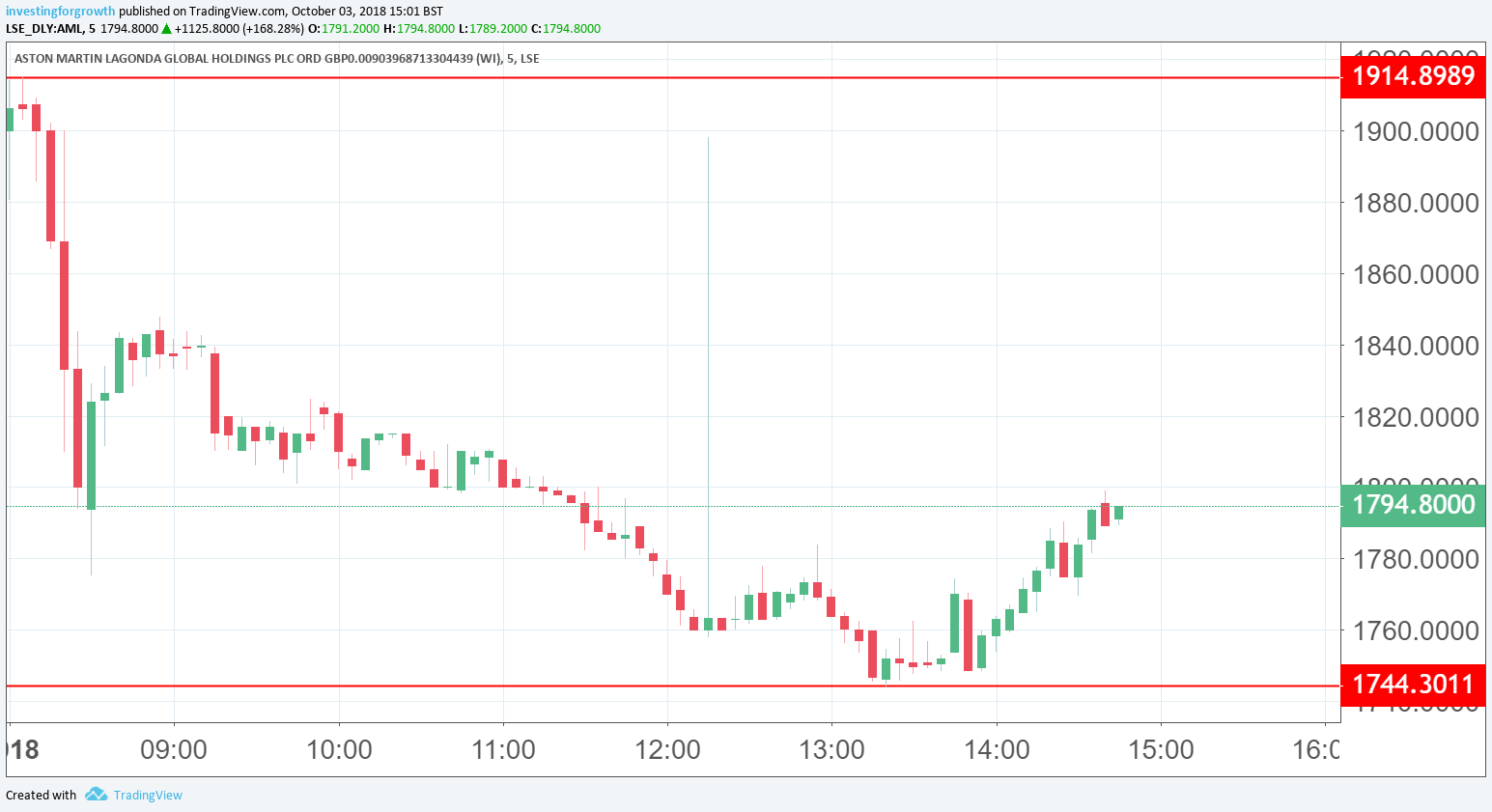Aston Martin crashes 8% at IPO before bargain hunters pile in
3rd October 2018 15:11
by Lee Wild from interactive investor
After initially heading in the wrong direction, investors have been taking advantage of cheaper prices to fill up on Aston Martin shares. Lee Wild analyses their first day performance.

Aston Martin makes great cars, but even slashing the price couldn't guarantee a winning first day of trading for its newly floated shares.
Talk in recent days has been around valuation, and Aston Martin Lagonda has clearly struggled to get the float away at the top end of the indicative range, set a fortnight ago at £17.50 to £22.50 a share, or £4-£5.1 billion.
Chatter this week about a market cap more like £4.3 billion proved spot on, with the shares priced this morning at £19. Nudging £19.15 at the opening bell was the high point. At lunchtime, traders were swapping stock on a so-called 'when issued', or conditional basis at £17.44, an 8% discount to the IPO price.
Concern here was that there would not be widespread demand from top funds and, with the business now valued at less than £4 billion, it will require a significant uptick in interest for Aston to be considered for inclusion in the FTSE 100 index at the next quarterly reshuffle in December.
At the day's low, Aston's £3.98 billion price tag beats only one FTSE 100 constituent - Royal Mail – worth £3.66 billion following this week's shock profits warning. At 99 in the top 100 is Rightmove, valued at £4.26 billion, then Severn Trent at 98, worth £4.39 billion.
This does not imply there's anything wrong with the business, and bargain hunters have been busily picking up stock at below £18.

Source: TradingView Past performance is not a guide to future performance
As we've written before, Aston is now a very different company to the one that went bust seven times over the past 100 years. It supplies a growing market for premium motors under the stewardship of experienced chief executive and industry man Andrew Palmer and finance boss Mark Wilson.
Despite a lacklustre debut, Palmer was "delighted by the positive response" from global investors and excited about Aston's growth strategy through the so-called Second Century Plan.
We haven't been keen on Aston’s decision to price the shares so aggressively, but suggested recently that the shares were "well worth a look" when they began trading. They still are if it achieves aggressive targets, which are a must if it's to justify a forward earnings multiple in excess of 20 times.
Bullish production forecasts are underpinned by ambitious plans to expand the range of vehicles, and the company is generating healthy profits. Delivering management's Second Century Plan, introduced in 2015, is crucial, and the track record here is good so far.
Phase one, aimed at stabilising the business, was achieved last year, and the second phase to strengthen the core business through an entirely new sports car range is almost done. Phase three is already underway with the relaunch of the Lagonda brand and plans for a first SUV, DBX in 2019.
Expanding the range of vehicles makes great sense as the number of high net worth individuals continues to increase. In China alone, they grew by 21% between 2015 and 2017 and globally the compound annual growth rate is put at about 7% between 2010 and 2016.
Aston believes the expanding pool of high net worth women will love its SUV. So will existing Aston Martin owners, 72% of whom also own an SUV, and other SUV fans looking to trade up.
These articles are provided for information purposes only. Occasionally, an opinion about whether to buy or sell a specific investment may be provided by third parties. The content is not intended to be a personal recommendation to buy or sell any financial instrument or product, or to adopt any investment strategy as it is not provided based on an assessment of your investing knowledge and experience, your financial situation or your investment objectives. The value of your investments, and the income derived from them, may go down as well as up. You may not get back all the money that you invest. The investments referred to in this article may not be suitable for all investors, and if in doubt, an investor should seek advice from a qualified investment adviser.
Full performance can be found on the company or index summary page on the interactive investor website. Simply click on the company's or index name highlighted in the article.